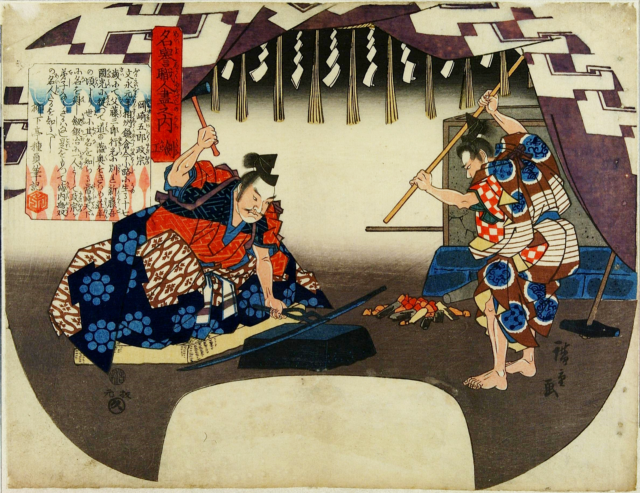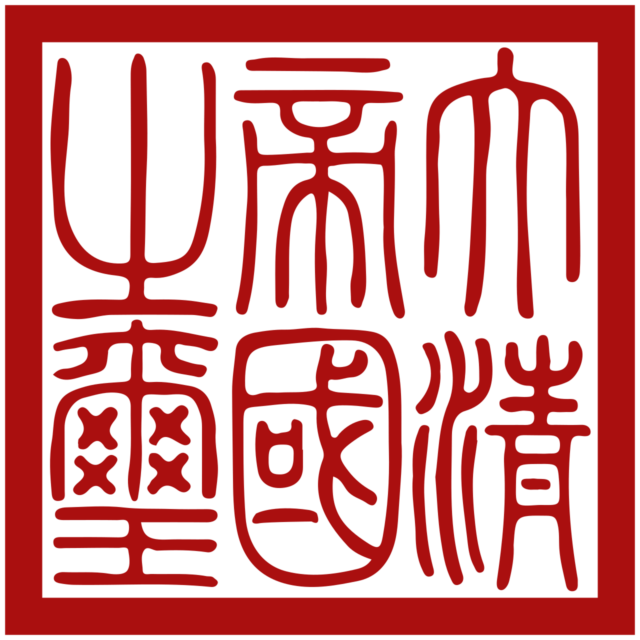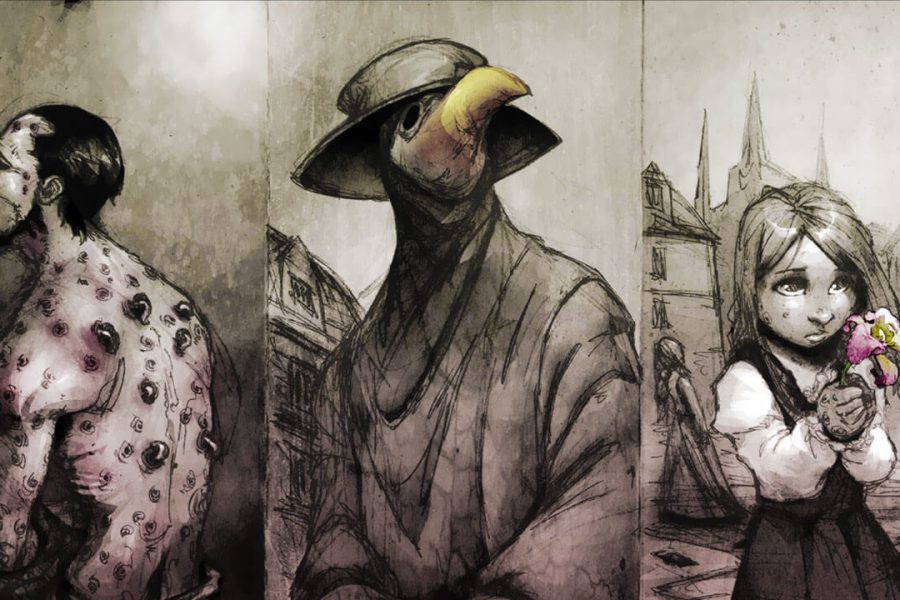Cultural and historical artifacts are an important part of the history of human civilization, as they provide rare glimpses into different time periods and cultures of our shared history. Unfortunately, many of them now exist only in stories and legends, lost somewhere along the way to war, natural disasters, or other tragedies of history.
10. Honjo Masamune

Honjo Masamune was a famous sword made by Goro Nyudo Masamune — a famous swordsmith in 13th century Japan. It was named after the Honjo clan and was considered one of Masamune's greatest masterpieces, largely due to its extraordinary sharpness and unique curvature.
Honjo Masamune was owned by several famous figures throughout Japanese history, including the shogun Tokugawa Ieyasu During the Edo period, the sword was passed down through the generations of the Tokugawa family, where it remained in the possession of the royal family until the end of World War II.
According to records, he was handed over to an Allied sergeant named Coldy Beamore as part of a peace treaty, although the man was never found. While some say he was an American soldier who disappeared after the war, others think the real Honjo Masamune was hidden long before the war to prevent it from falling into the wrong hands. Whatever its fate, the sword has since achieved mythical status due to the legend surrounding it, making it one of the most famous lost objects we know of.
9. Maxberg sample
When it was first discovered in In 1956 , the Maxberg specimen was one of eleven complete fossils Archaeopteryx , ever found. The specimen, considered a crucial step in the evolution of flying dinosaurs, was accidentally discovered by two unnamed quarrymen in the Solnhofen limestone quarry in Germany, after which it came directly into the ownership of quarry owner Eduard Opitsch.
Before it was lost, the sample was passed to several parties for short periods of time, including Maxberg Museum in Mornsheim in the 1970s. However, despite various offers, Opitsch refused to sell it, at least until his death at the age of 91. According to some witnesses, he kept it under his bed in his last days, although it was never found there. The current whereabouts of the Maxberg specimen remain unknown. One theory is that Opitsch may have sold it to a private collector long before his death, although there is little evidence to support this.
8. Jefferson Davis's Gold

Jefferson Davis's Gold refers to a legendary treasure believed to have been hidden by short-lived Confederate President Jefferson Davis during the American Civil War. The treasure is rumored to contain millions of dollars' worth of gold, silver, and other valuables acquired by the Confederacy during the war. Although rumors suggest it is located somewhere in Georgia or South Carolina, its exact location remains a mystery to this day.
During the Civil War, Jefferson Davis ordered the Confederate government to withdraw its gold and silver reserves from Richmond, Virginia , to keep them from falling into Union hands. Although we know that trains full of about $1 million worth of loot left Richmond in April 1865, we do not know if they ever reached their destination. U Davis was only a few dollars , when he was finally captured by Union soldiers, leading some people to speculate that he had hidden them permanently in an unknown location prior to his arrest.
7. The Irish Crown Jewels

The Irish Crown Jewels were a stunning collection of jewellery that included the star, badge and collars worn by the Grand Master Orders Saint Patrick — the highest order of chivalry in Ireland. The jewelry was made from 394 diamonds and other precious stones, and the star was the most impressive decoration of the collection.
The jewels, along with several other treasures, were kept in a safe in Dublin Castle until July 6, 1907, when a courier from the office reported them missing. Although the theft was initially suspected to be the work of Arthur Vicars, the officer in charge of the jewels, subsequent investigations failed to prove his involvement.
The high-profile robbery caused a national scandal in Ireland, leading to one of the largest investigations in the country's history. However, despite the best efforts of law enforcement, the jewels were never found and remain missing to this day. Although the exact value is difficult to calculate, the lost jewels could be worth up to 20 million dollars , making them one of the most valuable items ever stolen.
6. Romanov Easter eggs

The Romanov Easter eggs are a collection of gem-encrusted eggs created by the famous Russian jeweler Peter Carl Fabergé for the Russian royal family. The eggs were commissioned Tsar Alexander III , and then by his son, Tsar Nicholas II, and were presented each year as Easter gifts to members of the royal family. Each egg was unique and contained a surprise inside, such as a miniature portrait or a watch. In total, there were the period from 1885 to 1916 was created52 Faberge eggs , although today there are only 46 of them.
The fate of the remaining six eggs is currently unknown, as they were lost in the chaos of the Russian Revolution. In 1918, the Romanov family was executed by the Bolshevik faction and all their property was confiscated by the new Soviet government. The fate of all the Easter eggs was unknown until the 1920s, when it was discovered that some of them had been smuggled out of Russia after the Revolution.
5. Family Heirloom Seal of the Kingdom

The Heirloom Seal, also known as the Imperial Seal of China, was an artifact used in the Chinese imperial court. It was an important royal seal created for China's first emperor, Qin Shi Huang, in 221 BC, and was used to approve important documents such as royal decrees and edicts. Made from a piece of jade with its own tragic history, the seal was a symbol of the emperor's authority throughout China's imperial history.
Unfortunately, the family heirloom Seal of the Kingdom was lost to history during the Five Dynasties and Ten Kingdoms period, which lasted from approximately 907 to 960 AD. It is possible that the seal was destroyed during the chaos of that time, perhaps when the last emperor of the Tang Dynasty, Li Chu, immolated himself and his family. alive . Another theory is that the seal may have eventually fallen into the hands of the Mongol-led Yuan Dynasty somewhere in 14th century .
4. Mayan codices

The Mayan codices were a collection of pre-Columbian books written by scholars from the Yucatan Peninsula, Guatemala, and other parts of Central America. These early books , made on bark paper fig trees , contained information about Mayan history, religion, astronomy, and medicine, as well as records of rituals and divination practices. The codices were extremely important to Mayan society, as they contained important knowledge passed down from generation to generation, and were also used in religious ceremonies and rituals.
With the exception of three or four surviving fragments created after the fall of the Mayan civilization, all Mayan codices were destroyed by Spanish troops during their colonization of the Americas in the 16th century. The Spanish believed that the codices contained pagan beliefs and customs that posed a direct threat to their colonization efforts Most of the artifacts were completely burned, while others were lost over time due to carelessness.
3. Treasure of the Baghdad Museum
The infamous looting of the Baghdad museum has begun April 10, 2003 and lasted for more than 36 hours when the city was captured by US-led coalition forces during the Iraq War. Many of the museum's most valuable exhibits were lost, including priceless artifacts such as cuneiform tablets, statues and jewelry from the region's long and varied history.
The looting is largely blamed on the lack of security following the invasion, as museum staff fled days earlier in the face of a swift US advance. The museum was left unguarded during this time, resulting in over 15,000 items being stolen. Fortunately, over 8,000 of these were moved to safety by staff before the looting, and by 2018, about 7000 have been discovered by collectors over the years. However, as of late 2023, it is estimated that around 4,000 items are missing.
2. The Amber Room

The Amber Room was an ornate room created in the early 18th century by German Baroque sculptor Andreas Schlüter and Danish amber artist Gottfried Wolfram. Constructed with panels of carved amber, gold leaf, and intricate mirrors, it was a gift from King Frederick I of Prussia to Tsar Peter the Great of Russia. The Amber Room was considered one of the most stunning works of art in the world, with an estimated value in today's currency of over $290 million.
It was lost during World War II when the Nazis invaded the Soviet Union and looted much of its cultural treasures. The Amber Room was reportedly moved to Konigsberg Castle in East Prussia, where it was displayed as a trophy until the site was heavily bombed by Allied forces at the end of the war. While some people say the room was destroyed in the bombing, others suspect it was captured and sold on the black market. by Soviet soldiers during the last invasion of Germany.
1. The Peking Man fossils
The Peking Man fossils were a collection of ancient human-like remains discovered in the Zhoukoudian cave system near Beijing, China. Dated to between 770,000 and 230,000 years ago, they belonged to a group of hominids called Homo erectus Their discovery in the 1920s was a major event in archaeology and science, as it provided key insights into the evolution of early humans in Asia.
IN September 1941 , as World War II raged, the fossils were transported from China to the United States for safekeeping. However, they never reached their intended destination and have remained lost ever since. Theories include that they were stolen by Japanese soldiers during the occupation of China, lost in transit, or destroyed by Allied bombing.













Оставить Комментарий